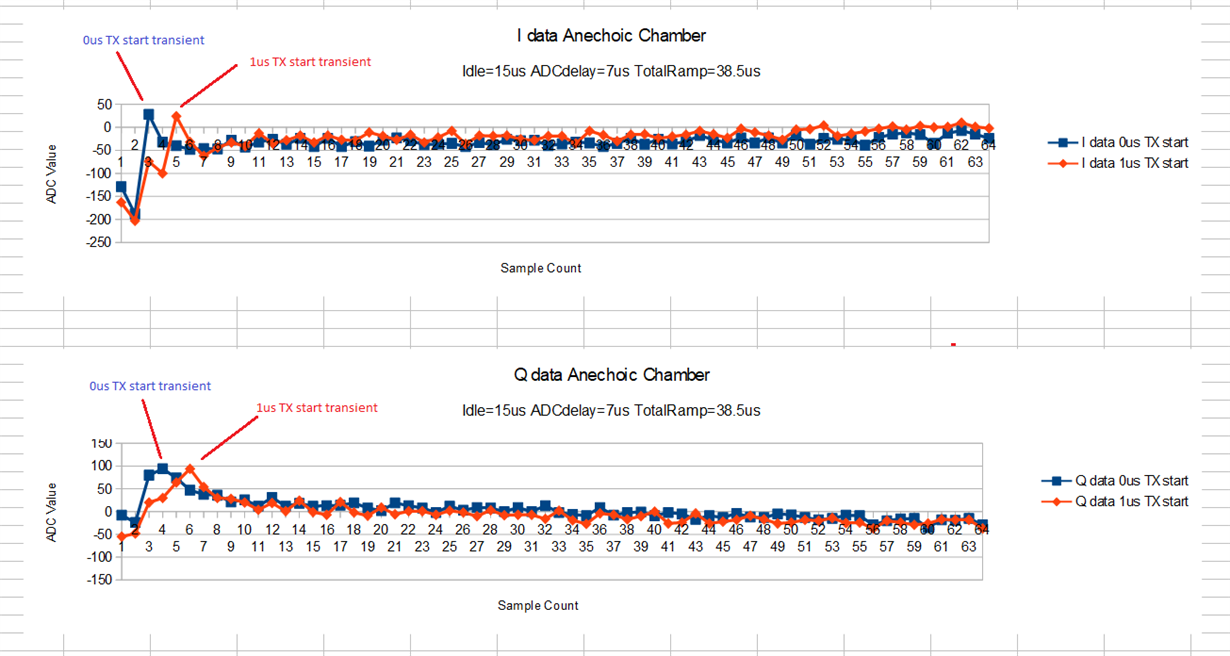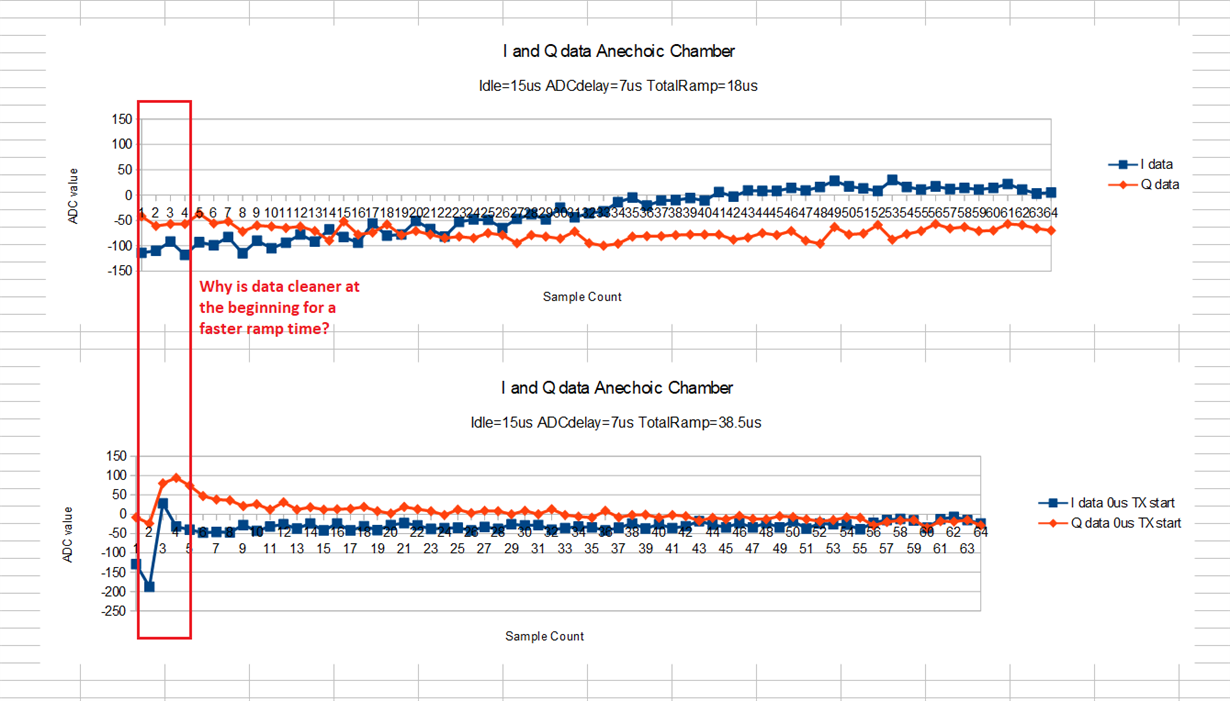Other Parts Discussed in Thread: MMWAVE-DFP
Hello;
I have two questions related to the profile configuration of a chirp.
According to mmwave_sdk_user_guide.pdf Figure 2: Chirp Diagram, the TX start time entered into the profile configuration should turn on the transmitter X us BEFORE the ramp start. Based on my observations, it appears to be doing the opposite of that and turning the transmitter on x us AFTER the start of the ramp. See images below of collected raw ADC data in an Anechoic environment:
Second, comparing two ramps, one with x us ramp time and one with ~2*x us ramp time, why does the ADC valid start time need to be increased to avoid collecting transient data? Below is raw data of a ramp of 18us compared to a 38.5us ramp, both using a 7us ADC valid start time until ADC data is collected. The 18us does not have any transient at the beginning, whereas the 38.5us has an additional 5-10 samples of poor data. Why do I need to wait longer before collecting valid data from longer ramps? Is this transient a function of the sampling frequency and not simply time?
I'm trying to understand this so I can dynamically calculate profile configurations while guaranteeing that transients are not collected.
Thank you,
Erik




